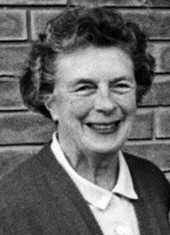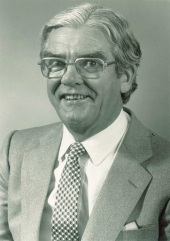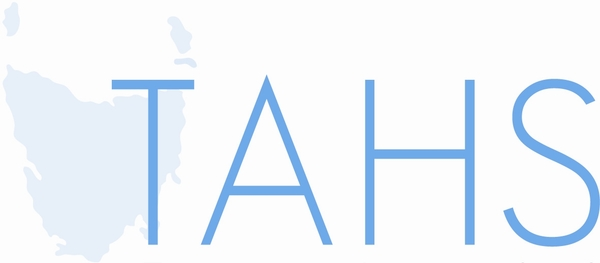The History of TAHS
The Tasmanian Longitudinal Health Study (TAHS) is a national collaborative study based at the University of Melbourne. Professor Shyamali Dharmage, the current TAHS principle investigator, chairs the TAHS Steering Committee and oversees the study. This study, started in Tasmania in 1968 and became a national study as the participants migrated to other states. The history of the study and the change of leadership/institutions are briefly outlined below.
Heather Gibson (1919-2005) studied Medicine at the University of Melbourne and became a leading figure in the establishment of the School Medical Service in Tasmania through which TAHS was run. Bryan Gandevia (1925-2006) studied Medicine at the University of Melbourne and became a respiratory physician and medical historian. He joined the team while working in the Department of Respiratory Medicine, University of NSW. Harold Silverstone (1915-1974) graduated in statistics from the University of Otago, New Zealand and University of Edinburgh, United Kingdom. He joined the TAHS team whilst the Reader of Medical Statistics at the Queensland University. The baseline study involved a survey of 8,500 (probands) schoolchildren born in 1961 (with lung function testing on all the children), a survey of their siblings (~17,000) and a survey of their parents (~17,000). This was conducted under the auspices of Tasmanian Asthma Foundation, funded by the Department of Health Services Tasmania and run by the Tasmanian school medical officers and school health nurses.
In 1974 the original team was joined by Graham Hall who followed up all 8,500 probands through the Tasmanian School Medical Service and performed lung function testing on a sample of 850 children stratified by their baseline respiratory symptoms.
Graham Giles completed a PhD in 1976-80 that included analyzing data from TAHS. TAHS was transferred to the University of Tasmania where Graham Giles joined Norelle Lickiss, Head of Community Medicine who conducted the 1979 study. This involved a survey of 850 probands (lung function testing of 250) funded by the Lions Clubs in Tasmania through the Tasmanian Asthma Foundation.


The Transfer of TAHS
TAHS was then transferred to the University of Melbourne when Graham Giles moved to Victoria. John Hopper and Graham Giles converted all 1968 data onto electronic media in early 1990s (funded by the Asthma Foundation of Victoria) and conducted survey of 1,500 probands in 1992 and another survey (and skin prick testing) of 60 asthma rich families in 1996. Mark Jenkins did his PhD using the 1992 study and joined John Hopper to run the 1996 study. Both 1992 and 1996 studies were funded by the NHMRC.
In 2001 John Hopper and Graham Giles handed over the leadership of the TAHS to Shyamali Dharmage. After forming collaborations with Haydn Walters (University of Tasmania) and Michael Abramson (Monash University) who was also an investigator of the 1992 TAHS grant and establishing a network of clinical investigators to oversee testing in ten centres across six states, we (Prof. Dharmage and the team) commenced the 36 year follow-up, another major follow-up study occurred between 2002-2008. The first step was to start tracing all 45,900 who participated in the original survey. We also computerised the 1974 and 1979 data, school medical records of 8,500 probands and birth records of ~3,000 probands.
From 2003-2008, we completed a survey of all traced probands and lung function testing, immune profiles and genetics on 1500.
In 2010, a survey and clinical study of a sample of probands were conducted.
From 2007-2012, we conducted a survey of all traced siblings (lung function testing and genetics on 2000) and all traced parents.
In 2012, we conducted another two follow-up studies of the probands as well as a parental follow-up. In the 2010 proband study, we invited participants who attended the 2002 clinical study to undertake another clinical study that included bronchial hyperreactivity (BHR) testing. The first and only follow-up study of the parent members of the TAHS cohort started in 2010. Those that were alive and traced to a residential address were asked to complete a postal survey. The latest TAHS follow up study of the TAHS occurred between 2012-2016. Of the original cohort, ~ 2600 completed questionnaires and attended a clinical study. These studies were/are mainly funded by the NHMRC. The other funders were Asthma Foundations of Tasmania, Victoria and Queensland, Clifford Craig Foundation, Royal Hobart Research Foundation, Sypkes Trust, Helen McPherson Smith Trust, GSK and The University of Melbourne.
In 2020, targeted biomarkers and whole genome sequencing were funded by GSK and Astra Zeneka.
In 2021, the TAHS 7th decade follow-up was funded by the NHMRC, which will commence in 2022. This follow-up will include surveys, clinical study that will include spirometry, Feno, FOT and CT images and linkages to health administrative databases.
Since 2001 the TAHS has been awarded over $20 million including grants, fellowships and scholarships. To date, 30 honours/MPH students, 14 PhD students and 10 postdoctoral research fellows have completed their research within TAHS and there are currently 7 PhD students.

